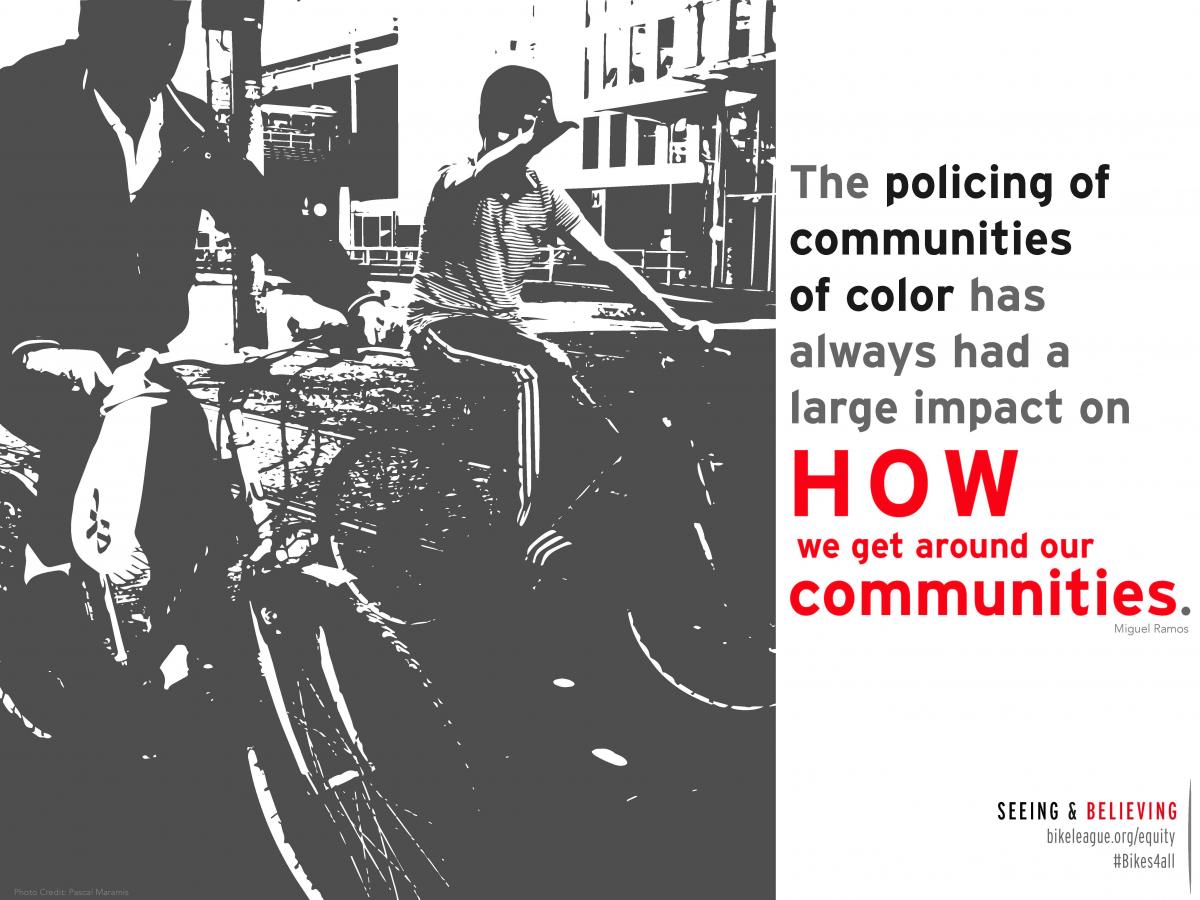DISCOVER YOUR LOCAL BICYCLING COMMUNITY
Find local advocacy groups, bike shops, instructors, clubs, classes and more!
Seeing & Believing in Bike Equity
 What does the League believe?
What does the League believe?
We believe that bicycling brings people together. We believe that, when more people ride bikes: Life is better for everyone; communities are safer, stronger and better connected; and our nation is healthier, economically stronger, environmentally cleaner and more energy independent.
One year into working on the Equity Initiative at the League, I see “bike equity” taking shape in two ways.
Bike advocacy is a civic engagement opportunity. As advocates and planners, we should get more people involved in the push to fund and design complete streets because they are a public resource that everyone should be able to access. The planning decisions that shaped the built environments we live in today were not made to serve everyone equally, and low-income families and people of color have had to bear the burdens of pollution, isolation, and disinvestment in urban areas. Equitable bike advocacy accepts this history as a starting point, and grows through building coalitions with other movements focused on mobility and equity. We’re working on defining best practices for equitable bike advocacy in policy and planning.
The bike movement grows stronger when we affirm that all ways of experiencing bicycling and streets matter. For too long, the bike movement chose an “either/or” strategy: either you bike my way, or don’t bike at all. More and more of us are choosing a “both/and” path, where we welcome a diversity of perspectives on bicycling, even when we don’t have the answers to all the questions new voices raise. We’ve been demonstrating this through projects like the Future Bike conference and ongoing discussions on the Bike Equity Network email list, and now we’re giving it a name: Seeing & Believing.
Bike equity means believing the stories people have to share about what it’s like for them to be in the street. There’s more to safety than being seen, and we need to believe when people tell us about insecurity beyond traffic violence.
Bike equity means believing the stories people have to share about what it’s like for them to be in the street.
This week, in the wake of a Missouri grand jury’s decision not to indict Officer Darren Wilson for killing unarmed teenager Michael Brown, millions of Americans are struggling with sorrow and frustration over the continued criminalization of black bodies. Brown caught Wilson’s attention on August 9 in Ferguson, Missouri because he was walking in the street rather than on a sidewalk.
We don’t know if Brown felt safe in that street, but he was a young black man in the United States of America, where young black men are 21 times more likely to die due to police violence than young white men. Sadly this country remains divided about whether people like Brown should be seen as victims or predators. In calling for widespread police reform in a statement last night, President Obama acknowledged this lack of consensus when he prefaced his remarks by affirming that “communities of color aren’t just making this problem up.”
The reality of police mistrust matters to the League’s Equity Initiative because more cities and advocacy organizations are developing plans for Vision Zero projects, which hinge on increased police enforcement of traffic laws. Vision Zero is absolutely coming from the right place, and it provides a much-needed common cause across the many different kinds of traffic violence. It intersects, though, with the painful reality that not everyone in this country feels safe looking to law enforcement for help.
Can we build common cause for safe streets that includes the fears of racial discrimination keeping so many people in their cars? What do enforcement-based approaches to traffic safety look like when they respect and address the realities of police mistrust? We’re going to start exploring how to answer these questions with insights gathered from bike/ped advocates this fall. Using their quotes, Dr. Echo Rivera has crafted images that shed light on why race matters in active transportation.
As a national organization, we have a role to play in convening tough conversations. We’re going to keep Seeing & Believing as we shed light on complex barriers to active transportation. But as bike advocates often remark, all transportation is local. Let me know how the Equity Initiative can be a resource.